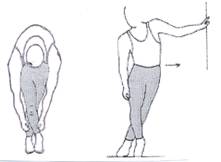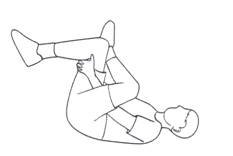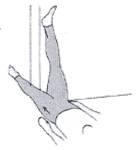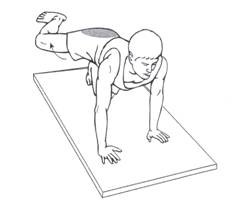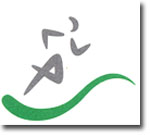

The Trochanteric Bursa is a fluid filled lubrication sac that sits on the outside / lateral side of the hip, under the iliotibial band. Inflammation of the bursa (bursitis) is the most common cause of lateral hip pain. Inflammation of this area can also cause a sensation of hip snapping. Trochanteric Bursitis can be the results of an overuse injury or compensation.
Gluteal Tendonitis is inflammation of the tendons that attach the gluteal muscles to the femur (thigh bone). This result from repetitive forced contractions of the muscle, such as in a soccer player forcefully kicking a ball.
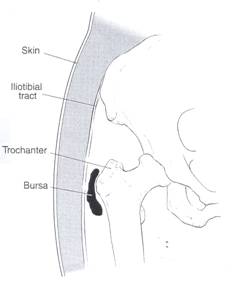
Trochanteric Bursitis can be prevented with appropriate warm-ups and stretching before activities, allowing for enough rest between practices and competition, stretching after and during activities, and maintaining hip and thigh flexibility, muscle strength and fitness. (See Figure 2- 5) Modifying activities to avoid pain is also important.
Patients describe lateral hip pain that occurs with repetitive activities such as running or cycling. Pain can be lateral or side aching of the hip or even a snapping or popping.
Initial treatment includes anti-inflammatory medication, ice, stretching and strengthening muscles that surround the hip, and modification of the activity that caused the problem. Physical therapy can also be very helpful.
If modification of activities, stretching and strengthening and anti-inflammatory medication is not enough a cortisone injection into the bursa can be very effective.
Surgical treatment for Trochanteric Bursitis is rarely indicated.
With rehabilitation we expect patients to be able to participate in activities pain free. Some patients may require more interventions than just home exercise- such as physical therapy, anti-inflammatory medications and possibly cortisone injection.
